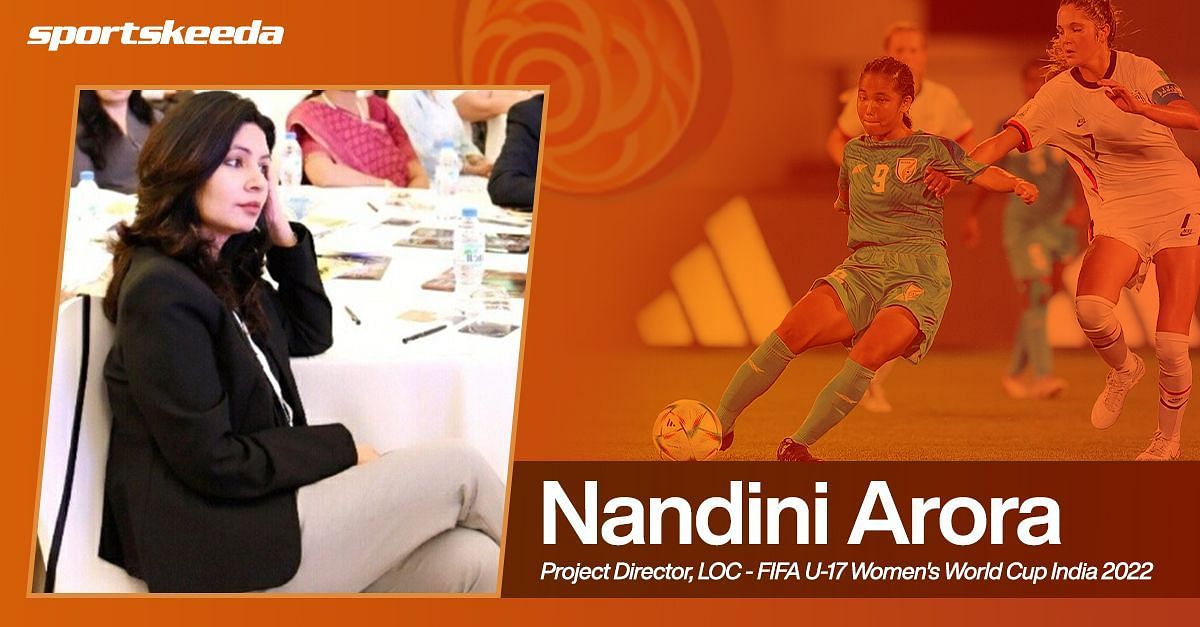
‘FIFA U17 Women’s World Cup has been quite a journey’: Project Director Nandini Arora
It’s been less than two months since the FIFA U17 Women’s World Cup was successfully hosted by India across three cities. In hindsight, FIFA U17 Women’s World Cup Project Director Nandini Arora speaks to Business of Sports, reflecting on the execution of India’s first women’s FIFA tournament.
From stadium roofs flying off and FIFA banning AIFF to COVID complications and reductions in venues, the Local Organizing Committee (LOC) overcame a series of challenges for which Nandini Arora gave her team a “10 out of 10”.
Arora’s own journey toward becoming the Project Director of a global youth football event isn’t a conventional one. Growing up playing cricket, she began her career as a sports journalist. Interviewing legends like I M Vijayan and Baichung Bhutia got her keenly involved with football, and in 2019 she took a contractual position as the LOC’s Head of Community Engagement and Protocol.
Extraordinary efforts
While for many of us, a sporting extravaganza begins with the first kick-off and ends with the winning team lifting the championship trophy, for the organizers, it’s often a multi-year engagement.
“This tournament has been quite a journey…an amazing journey for sure, with lots of ups and downs,” Arora tells us.
“This [FIFA U17 WWC] was initially [a] 2020 tournament…that edition got canceled, and India was awarded the 2022 [edition].”
Non-stop rain complicated construction work at the venues, especially in Bhubaneswar and Goa, for which Arora highlights the “extraordinary efforts” to get the stadia ready on time thanks to the unflinching support of the state and central governments.
FIFA U17 Women's World Cup's long term legacy
A question that is often asked when India hosts any big-ticket global event is, what is the long-term legacy of the sport itself?
To this, Arora points out the legacy programs undertaken by FIFA along with AIFF, saying:
“More than 300 women were given scholarships to do coach and referee education courses.and other than this, under our community engagement program, ’Football For All', we have more than 30,000 kids [who] were introduced to the game of football.”
Highlighting the inclusive aspects of the FIFA U17 Women’s World Cup legacy programs, Arora notes:
“[The] idea was to encourage more and more girls to take up football by seeing these young, beautiful players…on the ground, and also for boys to see that girls can also play competitively and then they treat…their girls…their mates, their colleagues, their fellow kids equally on the ground…ladkiyan khel nahi sakti waala concept break karne ke liye.”
Arora accepts that last-minute hurdles cannot be avoided while organizing sports competitions in India. In such situations, transparent and open communication is a must to ensure that any red flags are immediately brought to the superiors' notice. A team-first mindset is needed for on-field success, and the same is necessary for event execution.
Speaking on the importance of working together while conducting live sports tournaments, Arora said:
“Your mool mantra has to be ‘staying calm’. In every single meeting we used to have, we always used to say ki ‘bhai support each other, please have each other’s back.’”
FIFA Men’s World Cup vs U17 Women’s World Cup
Naturally, the conversation shifts to the FIFA Men’s World Cup and how Arora views the same, having organized a global FIFA tournament herself. In response, Nandini Arora points out that while the basics are the same, the scale changes dramatically.
She explains the difference between the FIFA U17 Women’s World Cup and the FIFA Men’s mega event:
“The youth tournament(s) are more for actual sport of football. FIFA Men’s World Cup [is] the sort of event that highlights the best that technology has to offer…for a sportsman or from a fan experience point of view. I look at the balls which are used, the camera angles – how they are broadcasting, how is the VIP box looking, all those things, of course, we tend to notice ki kaisa hai…otherwise it remains the same, but obviously, [the] scale is much bigger.”
The interaction ends with Arora correctly predicting ‘Messi magic’ would lead Argentina to its third World Cup triumph!